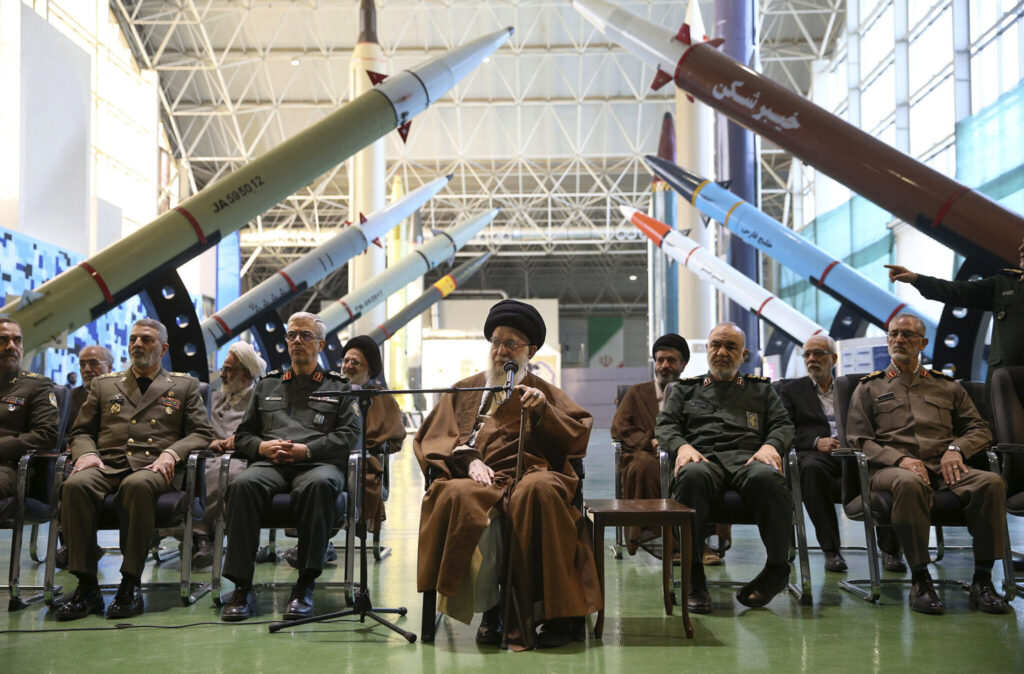In today’s complex geopolitical landscape of the Middle East, Iran’s role demands deeper scrutiny and decisive action, especially considering its surge in human rights violations, nuclear ambitions, and the support of regional conflicts through its proxy groups such as Hamas. Recent reports of a surge in human rights violations within Iran, including the execution of minors and dissidents, have amplified the urgency for a decisive shift in international policy. More than 127 people have been executed in Iran since October 7th. The Biden administration, along with global allies, must adopt a robust and assertive stance against the Iranian regime, acknowledging Tehran as the epicenter of regional instability, terrorism, and nuclear threats.
Supreme Leader Ali Khamenei, often referred to as the ‘head of the snake’ by Iranians and the diaspora, symbolizes the regime’s aggressive posture. The regime in Tehran is rapidly advancing towards its nuclear objectives. The latest confidential quarterly report by the International Atomic Energy Agency (IAEA) reveals that, as of October 28, Iran has amassed approximately 128.3 kilograms (282.9 pounds) of uranium enriched to 60% purity, marking a significant increase of 6.7 kilograms since the Agency’s report in September. The IAEA’s findings underscore the urgent need for a reassessment of international strategies towards Iran’s nuclear ambitions.
The prospect of a nuclear-armed Iran, dubbed the ‘head of the snake,’ represents not only a critical threat to the Middle East but also a global security crisis. Such prospect is magnified by Tehran’s track record of aggressive regional policies, support for terrorist organizations, and blatant disregard for international norms and human rights. The world cannot afford to remain passive as Tehran inches closer to this alarming threshold.
The phrase “head of the snake” aptly characterizes Tehran’s role in fostering regional conflict and terrorism. The Iranian regime, primarily through the Islamic Revolutionary Guard Corps (IRGC), has extended its influence across the Middle East, supporting proxy groups in countries like Syria, Yemen, Lebanon, and Gaza Strip. This strategy has not only perpetuated regional conflicts but has also contributed to significant humanitarian crises. Combating this influence requires a concerted and proactive international effort, focusing not only on the nuclear issue but also on Iran’s broader destabilizing activities.
The current approach of engagement and appeasement with Iran has proven counterproductive and outright dangerous. A recalibrated policy is necessary, one that prioritizes a firm stance against the regime’s oppressive regional and domestic tactics and its nuclear ambitions. This critical juncture is marked by the regime’s multifaceted conflicts and the growing voice of opposition, led by figures like Maryam Rajavi. Rajavi’s insights offer a profound understanding of the challenges posed by the Iranian regime, both internally and externally. Her description of the regime’s three-pronged war underscores the necessity for a global reassessment of policies towards Iran:
- War with the International Community: This conflict involves Iran’s nuclear activities and its provision of weaponry, like deadly drones used in Ukraine, posing a direct threat to global security. The international community’s response has often fluctuated between diplomatic engagement and sanctions. Rajavi highlights that this war extends beyond nuclear ambitions and reflects the regime’s broader challenge to international stability.
- Regional Conflicts: Iran’s involvement in proxy wars across the Middle East, including in Syria, Yemen, Iraq, and the recent escalations in Israel and Gaza, illustrates its strategy to destabilize the region. These interventions, Rajavi emphasizes, are not merely external aggressions but are intrinsically linked to the regime’s survival strategy.
- War Against the Iranian People: The regime’s internal conflict against its own citizens is perhaps its most critical battle. The surge in executions, with 170 individuals executed since the start of the Middle East war on October 7, reveals tactics to suppress potential uprisings. This repression is a stark reminder that the regime’s primary concern is to maintain its power, often at the expense of the Iranian people’s basic rights and freedoms.
As Rajavi astutely observes, the regime’s conflicts with regional countries and the broader world are strategic maneuvers to maintain the ‘head of the snake’ rule within Iran. In 2022, Khamenei stated, “Regional presence gives us strategic depth and more power.” This declaration about engaging in conflicts in regional countries to prevent internal strife in Tehran unveils a strategy aimed at externalizing domestic dissent. Such a tactic not only aggravates regional tensions but also serves as a diversion from the escalating unrest within Iran itself.
Given this context, the international community, led by the Biden administration, must reconsider its approach towards Iran. A policy focusing solely on nuclear non-proliferation is insufficient. It must also address Iran’s regional interventions and its systemic human rights abuses against its own people.
The Iranian opposition, represented by voices like Maryam Rajavi, plays a crucial role in shaping a future Iran. Supporting their call for a democratic, secular republic aligns with the goals of regional stability and global security. This support should include not just political recognition but also practical measures to empower opposition and civil society within Iran.
The international community must unequivocally support the Iranian people’s struggle for democracy and human rights. The recent upsurge in state-sanctioned violence and executions is a chilling reminder of the regime’s brutality. Recognizing the Iranian people’s right to defend themselves against this repression and to aspire to a democratic, secular republic is not only a moral obligation but also aligns with the strategic interest of promoting regional stability and peace.
The time for half-measures and appeasement has passed. The path to a stable and secure Middle East, and indeed a safer world, lies in empowering the Iranian populace in their quest for freedom and self-determination. Only through a robust and unified stance can the world hope to neutralize the threats emanating from the “head of the snake,” ensuring regional stability and global security. The cost of inaction is too great, and the time for decisive action is now.
Disclaimer: The views and opinions expressed in this article are those of the authors and do not necessarily reflect the official policy or position of Newslooks.com







